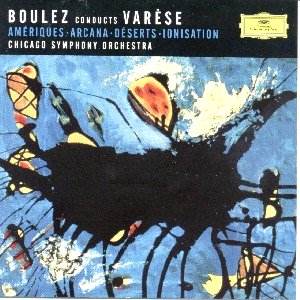 Composer: Giacinto Scelsi
Composer: Giacinto Scelsi
Works: String Quartet No. 4 (1964), Elohim (1965/7), Duo for Violin and Cello (1965), Anagamin (1965), Maknongan (1976), Natura renovatur (1967)
Performers: Annette Bik (violin), Andreas Lindenbaum (cello), Uli Fussenegger (double bass), Klangforum Wien
Recording: Casino Zögernitz, Wien, June 1997 (String Quartet No. 4, Duo), Schottenstift, Wien, November 1995 (Maknongan) and Bonn, November 1995
Label: KAIROS 0012162KAI
Giacinto Scelsi’s oeuvre represents a singular exploration of sound, often eschewing conventional melodic and rhythmic structures in favor of an immersive auditory experience. The works presented on this album span a critical period in Scelsi’s creative life, primarily between 1964 and 1967, a time when his fascination with isolated sounds and microtonal nuances was reaching its zenith. The String Quartet No. 4, written in 1964, serves as a pivotal entry point into his sound world, characterized by an intense focus on the vibrational qualities of pitches rather than traditional harmonic progression.
The Klangforum Wien delivers a commendable performance, navigating the complexities of Scelsi’s music with a blend of precision and sensitivity. The String Quartet No. 4, in particular, showcases the ensemble’s ability to sustain long tones while exploring dynamic shifts that imbue the music with a sense of organic growth, a concept Scelsi articulated with clarity. The musicians deftly manipulate the textures, allowing the listener to perceive the subtleties inherent in each note, an endeavor that reflects Scelsi’s assertion that “if you play a sound for a very long time, it grows.” The interpretation here strikes a balance between rigorous attention to detail and an overarching sense of exploration, although moments of potential monotony do arise as the works often dwell on similar pitch collections.
Moreover, the performances of Elohim and Anagamin expand this sonic palette further into the orchestral realm, employing a small string ensemble that heightens the richness of Scelsi’s textures. The dynamic contrasts, particularly in Elohim, are expertly rendered, revealing the intricate interplay between the strings. However, the lack of pronounced melodic development in these works may challenge listeners accustomed to more traditional forms of musical narrative. The Duo for Violin and Cello exhibits a stark intimacy, where the interplay between the two instruments becomes a study in contrasting timbres and expressive techniques.
The recording quality is commendable, capturing the resonant textures and delicate nuances of Scelsi’s sound world. The acoustic settings of the Casino Zögernitz and the Schottenstift provide a lush backdrop that enhances the vibrational qualities of each piece. The engineering effectively balances the instruments, allowing for a clear delineation of the harmonic explorations without sacrificing the warmth of the ensemble’s sound.
While Scelsi’s orchestral compositions may present a more varied introduction to his musical philosophy, the selections on this recording offer a coherent survey of his preoccupations with sound. Maknongan, dating from 1976, provides a notable contrast, integrating a more discernible melodic line and a broader emotional spectrum. It suggests a maturation in Scelsi’s approach, as if he were reaching for a more communicative language while still remaining anchored in his distinctive sound explorations.
This release stands as a testament to Scelsi’s highly original output, showcasing performances that are both dedicated and insightful. The interpretations by Klangforum Wien reveal the intricacies of Scelsi’s music while inviting listeners to engage with its profound complexities. This compilation may not serve as the most accessible entry into Scelsi’s world, yet it undoubtedly enriches the ongoing discourse surrounding his contribution to contemporary music. For those intrigued by the depths of sound exploration, this recording is an essential addition to the discography of a composer whose idiosyncratic vision continues to provoke thought and inspire.



